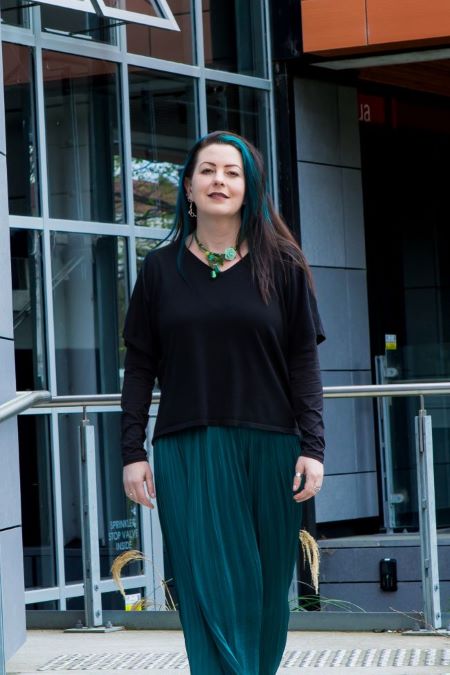The Green Party has been doing it for years – sustainable conferencing. While the television cameras have tended to focus on the folk dancing and woolly jerseys, behind the scenes has been carefully thought-out and executed plan to minimise the environmental impact of the annual bash.
And while it is core business for politicians whose mission it is to save the planet, there are sound bottom-line benefits too.
Just one conference can blow your company’s carbon budget.
“Big conferences can generate 2000 tonnes of carbon,” says the head of Landcare’s carboNZero programme, Ann Smith.
“That’s as much as many large companies generate in whole year.”
Generating excess carbon is about to cost us money, and not just in carbon emissions charges.
In Europe, people are starting to ask questions about the environmental viability of flitting between countries for events (the British environmental journalist George Monbiot was denied the prize money for winning Italy’s Pemio Mazzotti Prize for literature after he announced that his personal commitment to giving up virtually all flying meant he wouldn’t be at the awards ceremony).
Images of executives heading off for luxury meetings in exotic places are definitely not the public relations look of the 21st century. But just going cold turkey and cutting out conferences and meetings is not good for business, and definitely not good for our tourism industry.
The answer is sustainable conferencing – rationing your get-togethers and making sure that those you do have are as gentle on the planet as possible.
The first question to ask is whether you actually need to meet in person. Does the business on the agenda really require participants to be together in one room?
Rationing face-to-face get-togethers with managers from different places to say, once month instead of once week, with teleconferences in the weeks in between, can save time and money as well as the environment.
If the thought of teleconferencing sends shivers down your spine, then it’s time to put aside your memories of scratchy phone links where half the participants can’t be heard and embrace the new technology. Keith Block is head of video conferencing at Gen-i, Telecom’s ICT division. He says that modern conferencing systems have little resemblance to the flat flying-saucer devices that pioneered the industry.
“There’s world of difference,” he said. “It’s getting so good now with high-definition systems that you can see the sweat on the faces of the people at the other end.”
Like most technologies, prices for video conferencing technology have fallen sharply. Where it once cost $50,000 to buy system, you can now get basic standard-definition system for around $4500, with high-definition systems starting at $15,000.
Systems can be established on either standard phone lines (pay per minute) or use internal networks between offices, which is much cheaper. Desktop systems can be set up in individual offices, either using software installed on the existing computer or with dedicated, stand-alone screen. Organisations that can’t afford their own equipment can book and use Gen-i’s facilities.
Block’s experience in New Zealand and Britain is that video conferencing has to be led from the front.
“In Telecom, we started by installing 35 desktop video-conferencing units for general managers throughout the company, in New Zealand and Australia,” he said.
“We gave them the freedom to use them as they wanted, and they did, and other staff saw them using them and wanted to use them too, and now we have 90 desktop systems in place.”
In his five years with Telecom, he’s seen video conferencing use expand from around 150 meetings month in 2003 to 650 month last year.
“People are getting used to it and realising how much work can be done that way,” he said.
“I’m based in Wellington. If I have to go to Auckland for meeting, I’m up at 5am to catch seven o’clock flight, and I’m usually not home again until six or seven at night. I’d much rather have video conference.”
One organisation shaving tonnes off its carbon footprint (and thousands off its travel budget) through video conferencing is the Engineering, Printing and Manufacturing Union.
Equivalent in budget, staff numbers and structure to many medium-sized national businesses, the union installed video conferencing facility when it built new head office in Wellington two years ago.
National secretary Andrew Little says that although some staff were sceptical, it’s proved its worth.
“We often need to bring staff, members and employers from around the country into one discussion,” he said.
“We’d used telephone conferencing for years with some success, but video conferencing has taken it to new level.”
He estimates that installing the equipment in the union’s offices in Auckland, Wellington and Christchurch is saving about $30,000 year in airfares.
“For example, the leadership team which used to get together once month is now meeting only once year. Everything else is done by video conference. It’s freed up lot of management time, and saved us money,” he said.
Video conferencing is also being used to bring industry councils together more often.
“And when we are working with employers who have the technology, we talk to them that way too,” Little said.
But there will always be need for face-to-face meetings and conferences, which carboNZero’s Smith acknowledges.
“We’re not telling organisations not to hold conferences,” she said. “They’re an important part of the New Zealand tourism industry, and often vital to the running of businesses and organisations.
“What we are saying is ‘think about what you’re doing, and make sure that those you do hold are really worthwhile’.”
That’s where the Greens come in. They accept that party members have to come together once year to discuss policy, but don’t believe that the Earth should pay for it. Their conferences are as green as they can get them.
Party co-convenor Roland Sapsford says it’s not that hard once you get your head around the concept.
“It’s about having sustainability issues to the forefront of your mind when you are planning,” he said. “You’ve got to get your head into the right place.”
He starts by asking himself how delegates will travel to the venue, which helps determine the location.
“For democracy reasons, we are committed to moving our conferences around the country, but locations and venues still have to be easily accessible and not require large numbers of people to fly,” he said.
Choosing locations that are as accessible by car for as many people as possible (carpooling is second nature to the Greens) and with easy access to buses and trains, keeps the number of people flying to minimum. Those who do fly are encouraged to offset their emissions.
The next challenge is the venue itself.
“We look for conference venues with good waste and energy reduction policies in place,” Sapsford said.
“We try to book up to two years in advance to give the venue managers and us time to organise things properly. It’s much harder to be sustainable when you are pushed for time.”
The party frequently looks outside the main conference circuit hotels for its venues, picking locations like universities and maraes for the flexibility they allow.
“When you’re staying on marae, you all have to pitch in together and make the food and do the dishes,” Sapsford said.
“It makes everyone at the conference really aware of what’s going on behind the scenes – you can see how much is being wasted – and has the added bonus of being really good team-building process.”
Venues which don’t use artificial lighting, heating and air conditioning are popular Green Party venues.
“We look for places where there is passive solar heating and we can open the windows and use natural light instead of putting up with the hum of air conditioning and the flickering of fluorescent lights.
“It’s much more pleasant for the delegates and uses less energy.”
The Greens aim

Spring Break Fiji: Managing a high-impact tourism experience in the Pacific
Picture: Tourism HQ Director Richard Henry Running an international experience-led travel event on a remote Pacific island might sound like a logistical nightmare, but for Tourism HQ Director Richard Henry,










